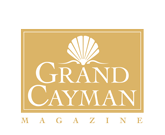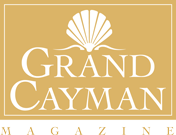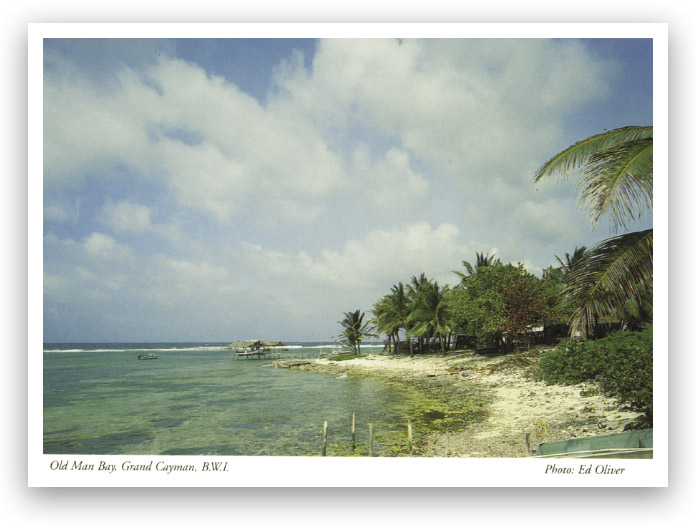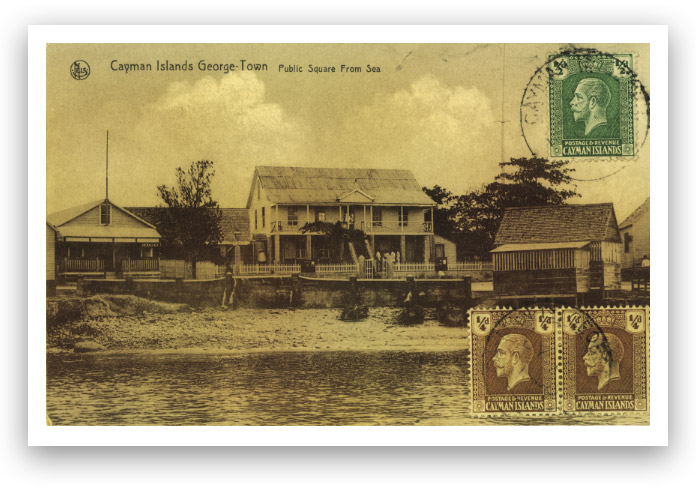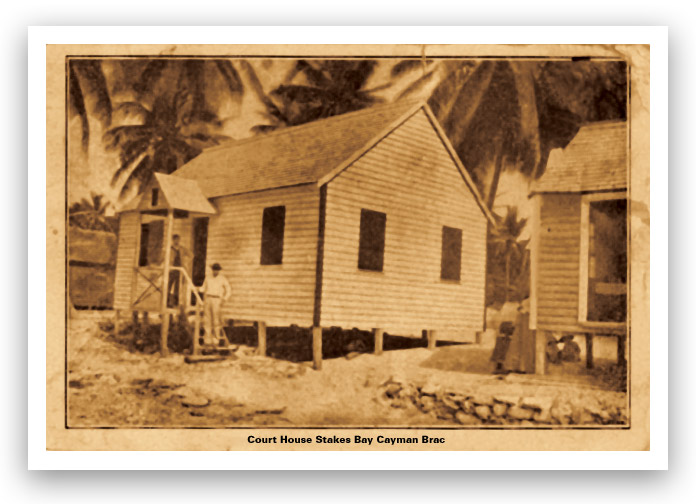“Deltiology,” he said.
“I’m sorry?” I replied.
“The study and collection of postcards, that’s what it’s called: deltiology.”
“Ah, of course,” I said, mentally filing away that little nugget for future episodes of “Jeopardy.”
This brief exchange marked the beginning of my chat with Ivan Burges, a British gentleman who has lived in the Cayman Islands since 1979 and whose enthusiasm for collecting postcards has allowed him to publish two books on the subject.
Simply titled “Grand Cayman on Old Postcards” and, more recently, “The Cayman Islands on Old Postcards,” the privately published works take readers on an historical journey through the 20th century, from turtling and thatch ropes to the construction of buildings that still stand today.
Starting the habit of a lifetime
Burges was born in Templecombe, Somerset, and got bitten by the collecting bug when he was 8 years old. At that time, it was stamps that grabbed his interest.
“Dad would bring home stamps from the office – it was how we learned about geography,” he recalled. “I remember tearing stamps off postcards back then,” he said, shivering at the memory of behavior that clearly now appalls him. “One should never do that with old cards, but I was young and wanted to put them in my book.”
His love of collecting stamps has not diminished over the years, but it was to be joined by another related hobby when he moved to Grand Cayman.
“I picked up one or two postcards not long after I got here, I thought they were nice,” he said.
Burges admitted that his subsequent foray into the world of deltiology was more due to his penchant for hoarding, rather than a deliberate choice. Still, while empty cans and old utility bills made their way to the garbage bin, the postcards remained, and he began to scour online auctions for treasures to add to his collection.
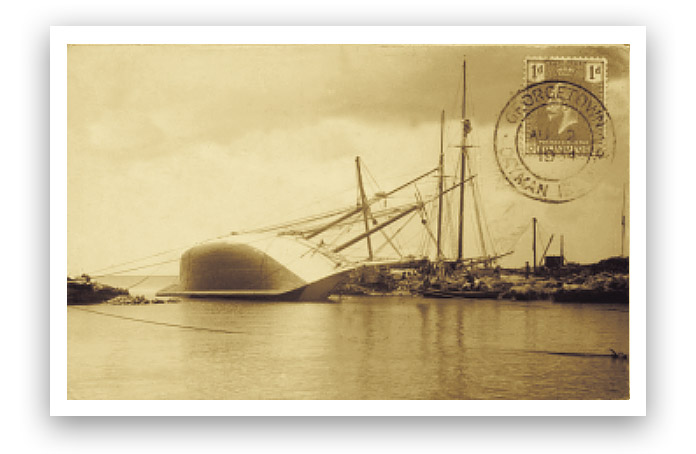
“The problem is that people’s collecting habits have changed over the years,” he said, “and the cost of things has gone up. Some cards are worth a lot of money. For example, this wonderful card with two careened schooners is probably worth about $150.”
The black-and-white card, Burges’s favorite in his books, but not owned by him, is postmarked Aug. 2, 1934, and was sent to Bruce McCausland by Ernest Panton.
“I believe [Bruce] was the son of William Graham McCausland, who was postmaster of the Cayman Islands in 1908,” said Burges.
The thrill of the hunt
The Cayman Islands postcards don’t often come up in online auctions, yet every time Burges finds one, he finds his curiosity piqued anew. Not many of them have pictures of people, but those that do, send him on a quest to identify the subjects.
For example, there is a card from the 1930s, published by A.C. Panton, titled “Fairies at the Pool.” It features nine children in costumes posing at the edge of a man-made pool, and only recently did Burges find someone who could recognize all of them.
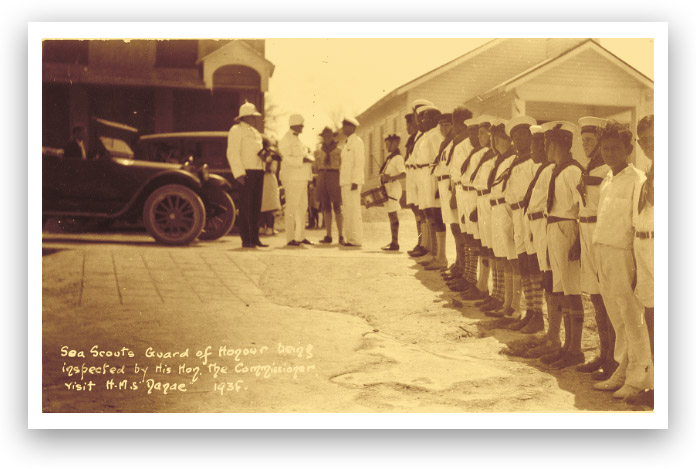
His latest book asks for assistance in identifying the Sea Scouts lining up to be inspected by Police Inspector Roddy Watler and Commissioner A. W. Cardinall in a 1935 postcard set in George Town.
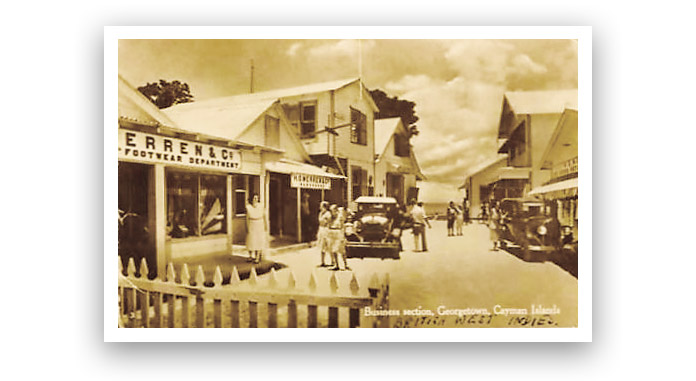
A select group
There is no secret postcard-collecting society in Cayman, or indeed, even a public one. With the scarcity of historic Cayman postcards available in the market, coupled with the specialized interest in the subject, only a few local residents could be considered avid collectors.
Burges admits to having about 500 postcards in his own personal collection and cites Graham Booth and Tom Giraldi as being the two other deltiologists he knows with impressive catalogs of cards.
“A lot of collectors don’t like to show what they’ve got, or share information,” he ruefully confided, although as both gentlemen are referenced in his second book for their “invaluable assistance and input,” one can only guess that the miserly collectors to whom he is referring are sitting firmly on their stashes elsewhere.
Giraldi has actually published his own book titled “Cayman Islands Postcards,” which goes into great detail about each one, often including the year, printer, photographer or artist, description and level of rarity.
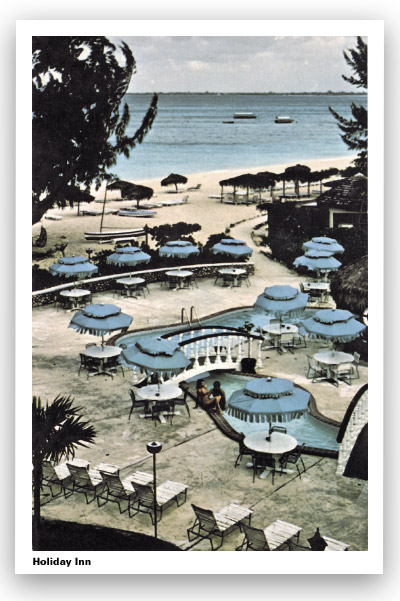 Window to the past
Window to the past
To thumb through the pages of Burges’s books is to immerse oneself in times gone by. Of particular interest are the countless photographs of buildings that have made way for more modern edifices in recent decades. They are an excellent marker of how relatively quickly the islands – particularly Grand Cayman – have been developed. Large swathes of wild, bush-covered land pictured on cards from 50 years ago are now either manicured and landscaped or have been replaced by hotels, condominiums, private homes and office buildings.
Anyone who lived in Cayman in the ’60s and ’70s will recognize with fond nostalgia the images of the Holiday Inn (now the site of The Ritz-Carlton), the Royal Palms Hotel (now the Royal Palms beach bar) and the Galleon Beach Hotel (now The Westin).
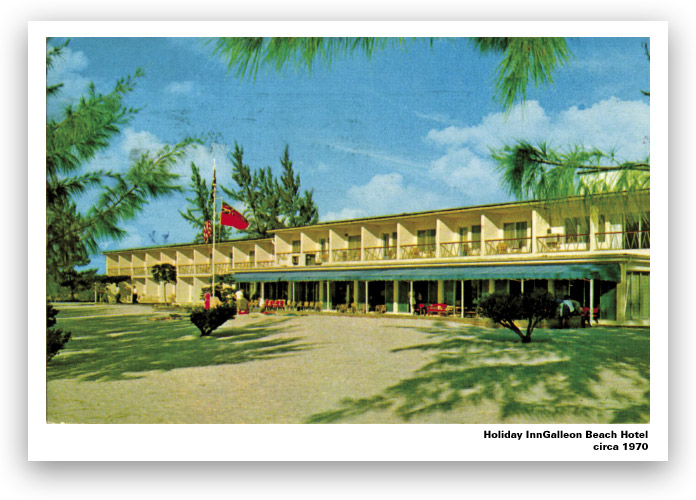 There are depictions of ships in full sail and foundering on the rocks, Pedro St. James as it was in the 1940s, George Town’s Shedden Road circa 1950, and even a picture of the Court House in Stake Bay, Cayman Brac from a postcard that was mailed in 1914.
There are depictions of ships in full sail and foundering on the rocks, Pedro St. James as it was in the 1940s, George Town’s Shedden Road circa 1950, and even a picture of the Court House in Stake Bay, Cayman Brac from a postcard that was mailed in 1914.
The list of local postcard producers includes such storied names as A.C. Panton, artist Ed Oliver, H.O. Merren, Foster Brothers and Cayman Drug – people and companies who saw the benefit of creating Cayman postcards many years ago. Did they realize at the time how valuable they would become as part of the islands’ historical record?
Future quests
Postcards can be found at tourist destinations, but there is no doubt that in this age of technology, the industry has been somewhat eschewed in favor of digital substitutions. Although Burges appreciates that it is impossible to stop or even slow such advancements, they haven’t quelled his interest in picking up a new card if he finds something he likes.
There are historic Cayman Islands cards on his bucket list, such as that coveted careened schooners card, and so his searches continue.
The pirates may be long gone, but there is still island treasure to be found.
















